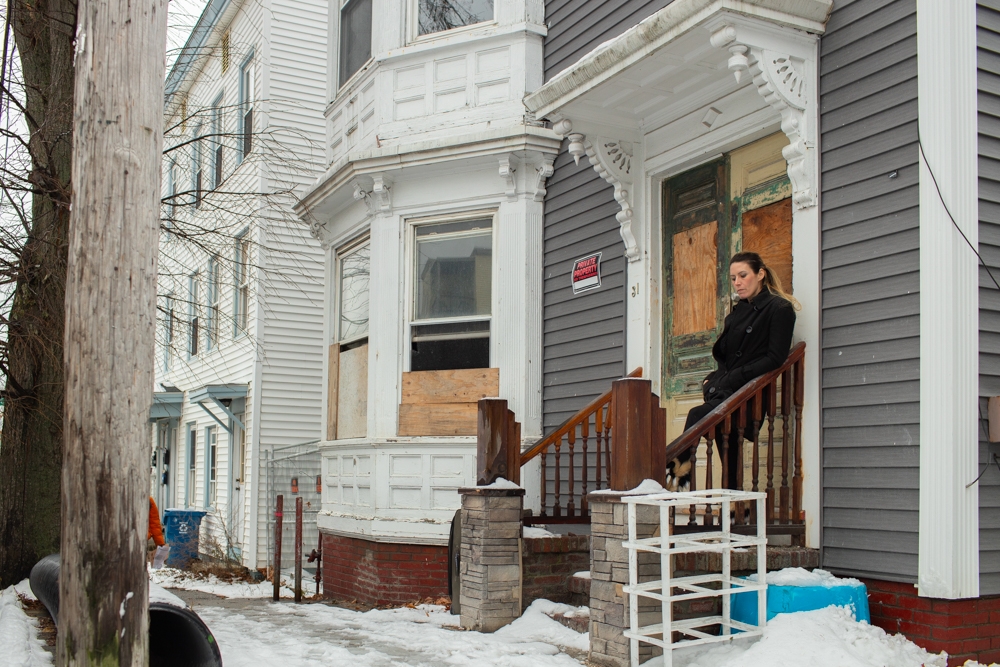
Matilde Simas

PX3 Prix de la Photographie Paris 2024 – State of the World
Curatorial Selection – Woman Rising: Sex Trafficking in America
Q: How has your personal background or life experiences influenced the global issues and stories you choose to capture through your photography?
My personal background has deeply shaped the stories I’m drawn to as a photographer. Growing up in a hard working immigrant family, in a home touched by domestic violence, I developed an understanding of trauma, resilience, and the silence that often surrounds suffering. These early experiences continue to guide my lens, gently urging me to seek out narratives that highlight the strength of the human spirit in the face of hardship.
This journey has instilled in me a sensitivity to the struggles many face in silence, and a commitment to telling stories that are often overlooked or misunderstood. Through my work, I strive to document human rights issues—particularly human trafficking and gender-based violence. Photography has become my way of bearing witness, not just to pain, but to healing and transformation.
Q: What inspired you to submit your work to The State of the World competition, and how has receiving this recognition from PX3 impacted your journey as a photographer?
Having been part of the State of the World exhibition in the past, I was inspired to submit my work again because it’s a rare opportunity to have these important stories seen on a global stage—presented unfiltered, through the photographer’s perspective. The exhibition fosters a powerful sense of solidarity among visual storytellers committed to shedding light on underreported issues.
Receiving recognition from PX3 has been incredibly meaningful. It has not only amplified the voices of those I photograph but has also validated the emotional and ethical investment I bring to every project.
Q: Can you take us behind the scenes of your winning series? What was the story you aimed to tell, and did any unexpected moments shape the final result?
Woman Rising: Sex Trafficking in America takes viewers behind closed doors in Maine to witness the rarely seen realities of sex trafficking in the United States. The story I set out to tell was one of strength—focusing not only on the trauma survivors endure, but also on their path to healing and empowerment. I wanted to highlight the resilience of women who are rebuilding their lives with the support of law enforcement and service providers.
Behind the scenes, the process was deeply emotional. I spent years earning the trust of survivors and the professionals who walk alongside them. One unexpected and powerful moment that shaped the final result was when a survivor, after viewing the photo story, felt inspired to share her own experience for the first time. That moment reminded me that storytelling is not just about bearing witness—it can be part of the healing process itself.
Q: Your work highlights some of the most crucial and pressing issues in today’s world. How do you balance technical precision with the raw emotion needed to create a powerful, thought-provoking image?
Balancing technical precision with raw emotion is a delicate process, especially in a project like Woman Rising, which focuses on survivors of human trafficking. I approach it with a deep commitment to ensuring that each photograph not only tells a story but also respects the emotional complexity of their experiences.
On the technical side, I rely on a well-understood process—lighting, composition, and framing—to create an image. These elements allow me to showcase each individual’s strength while ensuring that the viewer feels a connection to the person in the photograph. However, the true emotional power of the image often comes from being present in the moment and allowing space for them to feel comfortable, to open up, and to express themselves.
I’ve found that it’s in the quiet moments, when I’m patient and attuned to the person in front of me, that the most poignant expressions emerge. This is when the emotion flows, and the photograph becomes not just a technical achievement but a window into someone’s life and journey. It’s all about balance—respecting the vulnerability of the person while also using the craft of photography to tell their story as powerfully as possible.
Q: Photography has the ability to raise awareness, shift perspectives, and even inspire action.
What role do you believe visual storytelling plays in addressing global challenges?
Visual storytelling is one of the most powerful tools we have to address global challenges. The photos we make aren’t just about capturing a moment—they’re meant to make people pause, reflect, and connect. When we approach storytelling with care, it can gently challenge the way people see things, stir empathy, and inspire small but meaningful steps toward change. It’s a way to help others not just notice what’s happening in the world, but feel moved to be part of it.
For over ten years, I’ve used photography to shed light on human trafficking. Over time, I’ve seen more people begin to understand just how close to home this issue really is. It touches so many aspects of our daily lives—from the phones we use to the clothes we wear, the food we eat, even the buildings we walk into. It’s a far more widespread and complex problem than most people realize.
Through projects like Woman Rising: Sex Trafficking in America, and others I’ve had the honor to work on, photography has also become a way for survivors to reclaim their stories and show their strength. My hope is that these images do more than raise awareness—that they shift the way we talk about trafficking, deepen understanding, and push for real, lasting change in how we support those affected.
Q: Your winning image is a reflection of an important moment or reality—how do you approach the responsibility of documenting such impactful stories?
Documenting impactful stories carries an immense responsibility, and I approach it with great care and respect for the individuals whose lives I am capturing. I understand that these moments are not just fleeting images, but representations of real experiences—often difficult and painful—that deserve to be handled with the utmost sensitivity.
For me, the process begins with building trust. Before capturing any image, I take time to connect with those I’m photographing, to listen to their stories, and to ensure they feel comfortable with my presence. This is particularly crucial in projects like Woman Rising, where the stories are deeply personal and tied to trauma. I prioritize creating a space where those I photograph can feel heard, seen, and safe.
Q: Looking ahead, are there any social or environmental themes you feel compelled to explore further through your work?
I’m drawn to exploring the connections between human trafficking and environmental displacement. As climate change accelerates, more people are being forced to migrate, often under precarious circumstances. This displacement can heighten vulnerability to trafficking, with individuals and communities becoming easy targets for exploitation. I aim to shed light on these overlooked intersections and raise awareness of how environmental shifts, migration, and human trafficking are deeply interconnected.
Q: What motivates you to continue capturing the world through your lens, and where do you hope to take your work in the future?
What motivates me to continue capturing the world is the power of visual storytelling to amplify unheard voices and shed light on pressing global issues.
I’m interested in continuing to expand my global work while also remaining deeply engaged with the realities within my own country. I hope to build stronger collaborations with grassroots organizations, survivor-advocates, and youth leaders who are doing essential work on the ground.